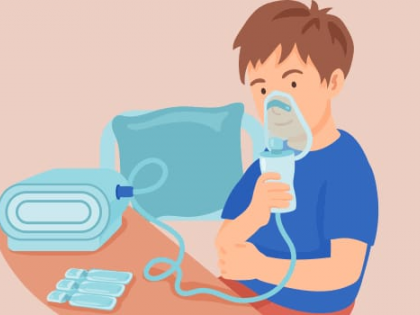How to Use a Nebuliser?
By Impact Desk | Updated: December 20, 2024 18:53 IST2024-12-20T18:52:13+5:302024-12-20T18:53:32+5:30
A nebuliser machine is an essential tool for individuals with respiratory conditions such as asthma, chronic obstructive pulmonary disease ...

How to Use a Nebuliser?
A nebuliser machine is an essential tool for individuals with respiratory conditions such as asthma, chronic obstructive pulmonary disease (COPD), or other lung-related illnesses. It transforms liquid medication into a fine mist that can be easily inhaled into the lungs, offering quick and effective relief. Whether you’re using a nebuliser for the first time or looking for detailed guidance, this blog will walk you through the steps to use it effectively.
Understanding the Nebuliser Machine
Before we begin, it’s important to understand the parts of a nebuliser machine:
- Compressor Unit: Generates the air pressure to change the liquid medication into mist.
- Medication Cup: Holds the prescribed liquid medication.
- Tubing: It connects the compressor to the medication cup.
- Mouthpiece or Mask: Allows you to inhale the mist.
There are different models of nebulisers, such as portable and tabletop. They are useful for people who find it difficult to use inhalers effectively.
How to Set Up and Use a Nebuliser Machine?
Step 1: Gather Your Supplies
Before starting, ensure you have all the necessary components: prescribed medication, tubing, the nebuliser machine and a clean mouthpiece or mask. Wash your hands thoroughly to maintain hygiene and prevent contamination.
Step 2: Assemble the Nebuliser
- Connect one end of the tubing to the compressor and the other to the bottom of the medication cup.
- Secure the mouthpiece or mask to the top of the medication cup.
- Make sure all connections are tight to prevent leaks while in operation.
Step 3: Add Medication
- Add the prescribed dose of medication into the medication cup using a dropper or pre-measured vial.
- Pour the liquid into the medication cup. Some medications may require dilution with saline—follow your doctor’s instructions carefully.
Step 4: Position Yourself Comfortably
Inhale when sitting upright in a comfortable chair. If you’re wearing a mask, make sure it fits snugly over your nose and mouth. For a mouthpiece, place it between your lips and seal it tightly.
Step 5: Turn On the Nebuliser
Turn on the nebuliser machine and check for a steady mist. Breathe slowly and deeply through your mouth (or nose if you are wearing a mask). Hold your breath for a few seconds to allow the medication to settle in your lungs, then exhale.
Step 6: Complete the Treatment
Breathe in the mist until the medication cup is empty, which will take 10–15 minutes. The machine makes a sputtering sound when the medication is finished.
Cleaning and Maintenance of Your Nebuliser
Cleaning the nebuliser machine effectively ensures it works properly and prevents infections. Follow these steps after each use:
- Rinse: Wash the medication cup, mouthpiece, or mask with warm, soapy water.
- Disinfect: Soak the components in a vinegar-water solution (1:3 ratio) weekly, or as recommended by the manufacturer.
- Dry: Reassemble as soon as all parts are thoroughly air-dried.
When the filters and tubing show signs of wear, replace them according to the manufacturer’s guidelines.
Tips for Effective Nebuliser Use
- Follow Medical Advice: Use the medication and dosage as prescribed by your healthcare provider.
- Stay Relaxed: Be calm during the treatment to absorb better medication.
- Monitor Symptoms: See your doctor if symptoms persist or get worse.
Benefits of a Nebuliser Machine
Nebulisers offer several benefits for managing respiratory conditions:
- Deliver medication directly to the lungs for faster relief.
- It is helpful for children, elderly people, and anyone who has trouble with inhalers.
- Allows for the administration of a number of different medications at the same time.
Conclusion
Using a nebuliser machine is straightforward when you understand its components and follow the correct steps. Each part of the process is important, from setting the device up for administering medication to cleaning it after use. If used properly and maintained regularly, a nebuliser can bring a tremendous change to your respiratory health and your general quality of life.
If you are managing asthma, COPD, or any other respiratory condition, a nebuliser machine is a great way to take your medication at home. C Always consult your doctor for tailored advice and be proactive about your health.
Open in app